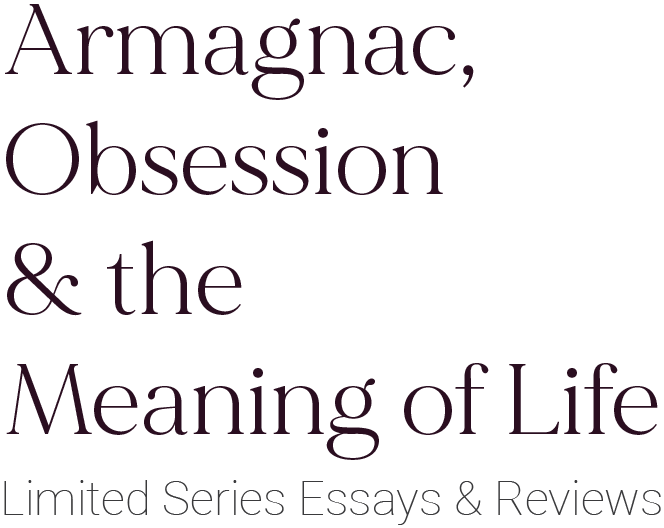Spirit Animals
ESSAY #3, REVIEWS #4-6
Presentation matters. Ask any sushi chef, Lady Gaga or the ghost of Steve Jobs. Presentation makes raw fish look appetizing, keeps a pop star perpetually surprising, and transforms an arguably overpriced device into an ostensible boon from the gods.
One could contend that presentation is surface, not substance. That what lies under the wrapper is what matters, not the wrapper itself. But I argue the wrapper is the crucial first impression. It attracts the necessary attention, it builds anticipation, it sets expectations. The wrapper initiates the whole affair, becoming an integral part of the experience itself.
Armagnac, like any spirit or product, is subject to the same principles of presentation. So when presenting a carefully crafted brandy expression, how exactly does one attract attention, build anticipation and set expectations? How does one give form on the outside of the bottle clues about the more abstract experience within?
One way to convey qualities, traits and ideas through imagery is to press our animal relatives into service. Animals often have personalities and characteristics we associate with human traits: Owls are wise. Pumas are fast. Monkeys are mischievous. Doves are gentle. These associations are powerful because they transcend language, culture and geography. They are damn near universal.
By way of example, the French auto maker Peugeot wanted to convey strength and swiftness and thus employs a lion for their corporate logo and hood ornaments. The French clothing company Lacoste was founded by a tennis pro known for his tenacity on the court. which earned him the nickname “the Crocodile.” The iconic croc logo was the first logo to appear on clothing way back in 1933, and it’s clearly worked, as the logo remains to this day.
Human fondness for fauna extends beyond mere marketing and penetrates much farther back in time, so far as to be carved by flint knife into our DNA. Nestled below ground in southwest France lie the Lascaux caves, containing larger-than-life artistic renderings of animals inhabiting the area at the time of the art’s creation. Ancient horses, wild cattle, giant deer, felines and even a rhinoceros were painted on the walls and ceilings by ancient humans some 17,000 years ago. The sinuous lines and artful compositions suggest this wasn’t merely prehistoric graffiti or a representation of what’s on the menu, but instead allude to deeper appreciation, a spiritual reverence for our sisters and brothers in the animal kingdom.
As for modern day Armagnac and the presentation thereof, allow me to present Exhibit A: the galloping zebra of Domaine de Charron. Why a zebra? Is the grace and beauty of the equine form a representation for the splendor and elegance of the spirit? Or maybe the contrasting black and white coloration is illustrative of the delicate balance between the light, sweet notes of stone fruit and the dark flavors of oak and sous bois. Or perhaps, because the stripe pattern is completely unique from zebra to zebra, its the perfect symbol of the singular qualities of this spirit.
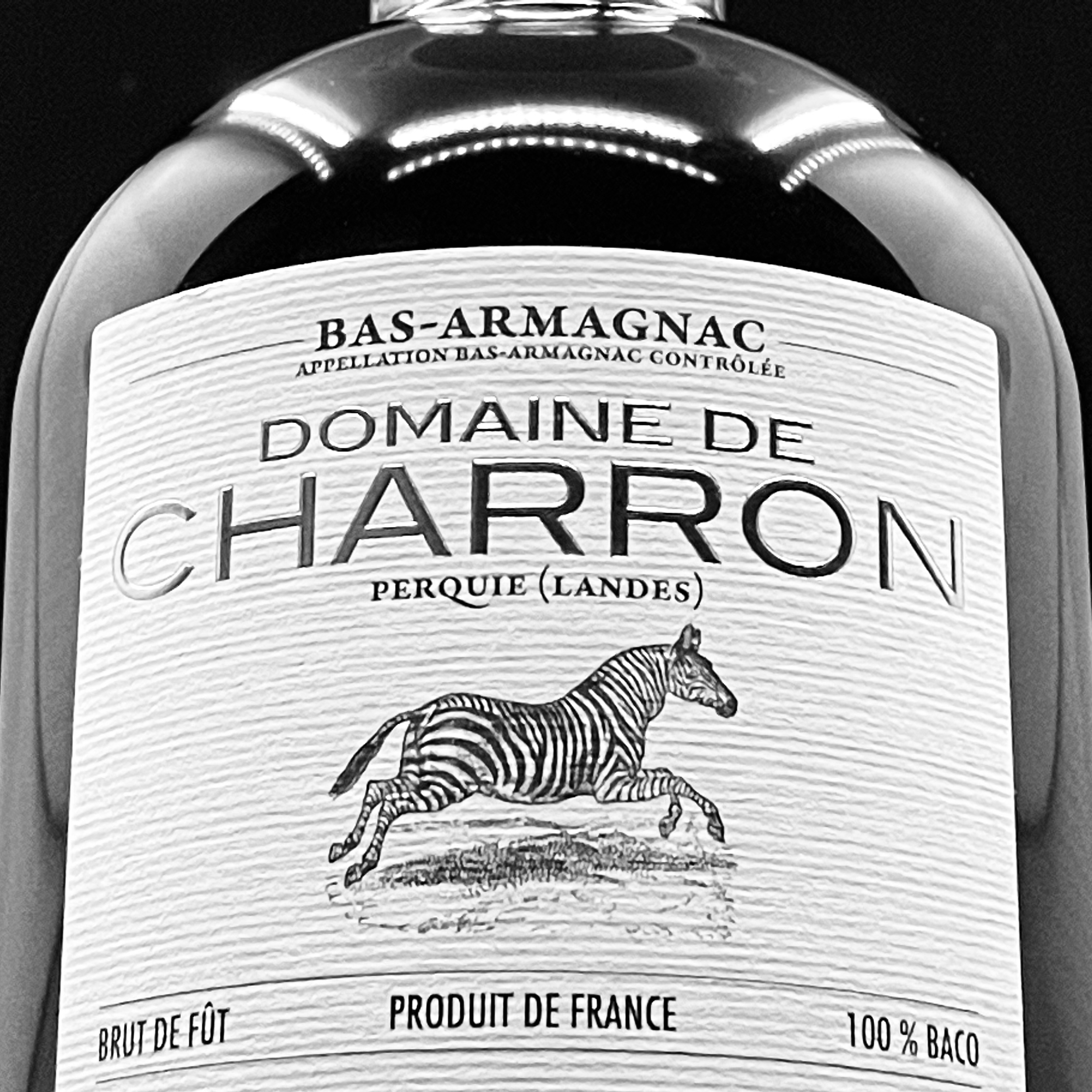
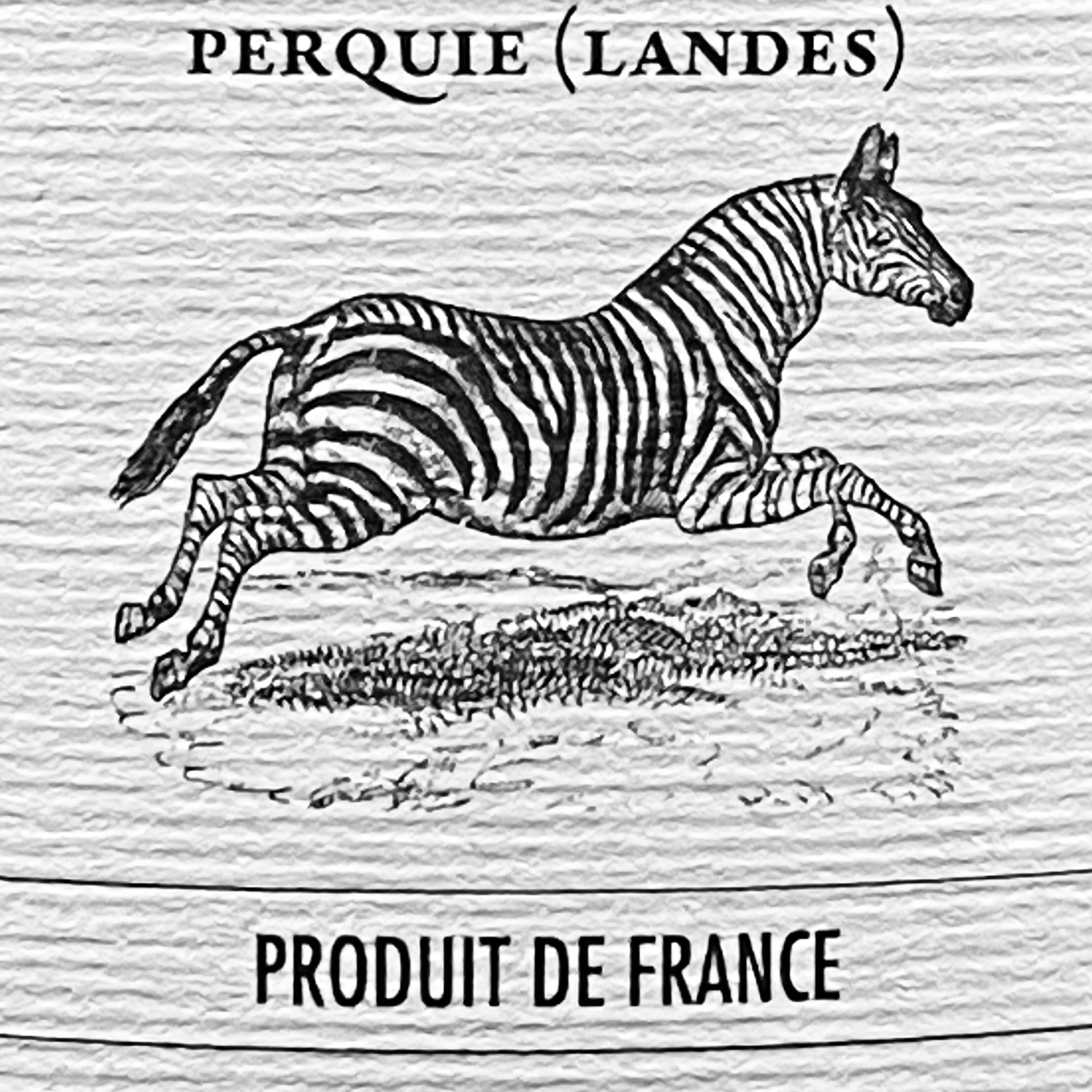

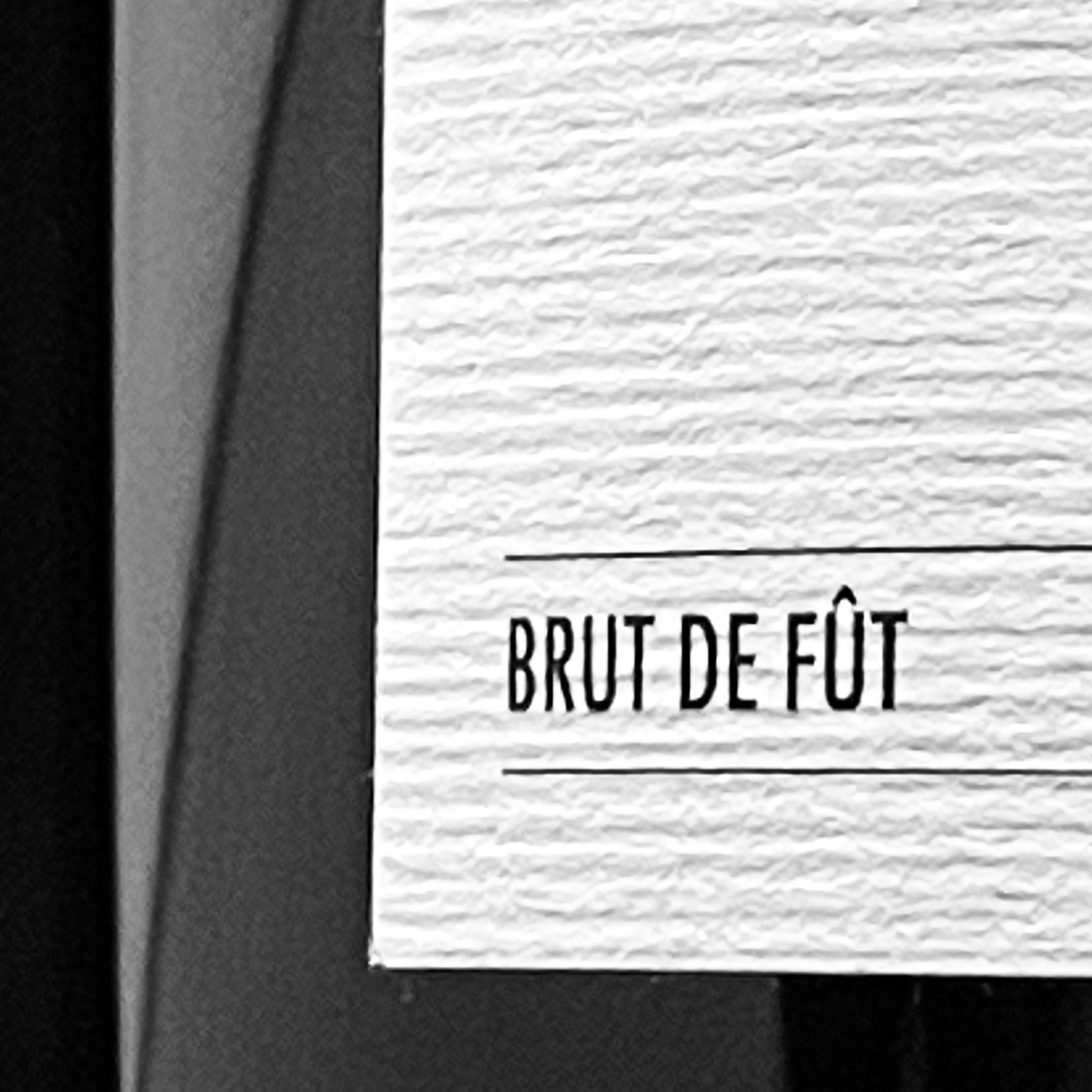
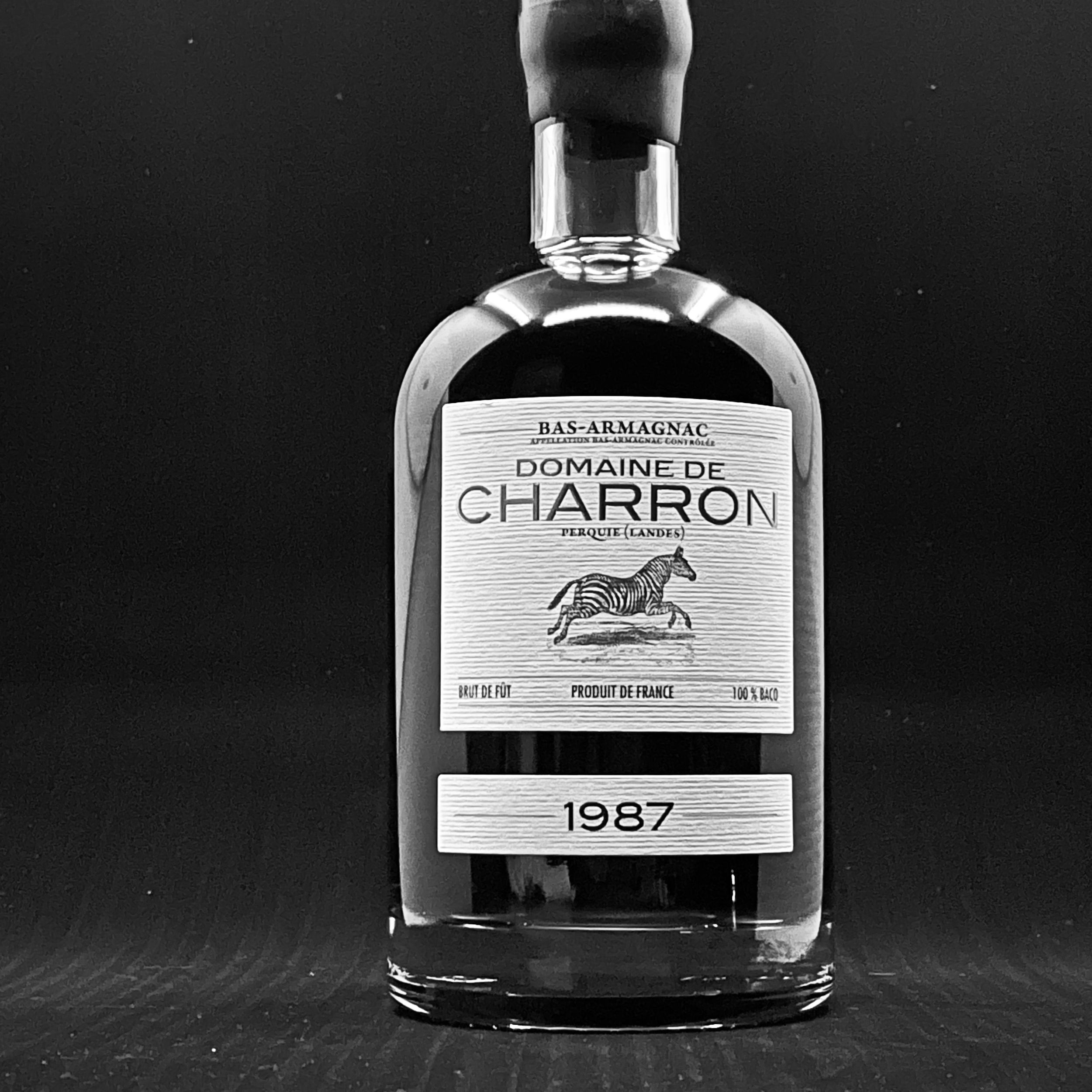
Nay! According to Charron, the zebra is a nod to the local rugby team, whose uniform polos are decorated in black and white stripes. (To know me is to know I dig for meaning where there may be none). But what Charron label lacks in poetic symbolism it makes up for in spades in the robustness and richness of the brandy.
Moving on, we study a pair of Armagnacs presented by Beast Masters Club, an independent bottler of whiskies and spirits. Beast Masters acquired a pair of Armagnac barrels from Chateau Garreau and christened the contents La Bête, French for The Beast. To represent The Beast they’ve turned to the tiger, the presumptive beast of beasts. The La Bête tiger is puffing a cigar and besplendored in a stylish suit replete with double-Windsor-knotted tie and vest. This tiger appears sophisticated enough to be an appreciator of fine Armagnac yet ferocious enough to puncture your noggin like an overripe Picpoul grape.
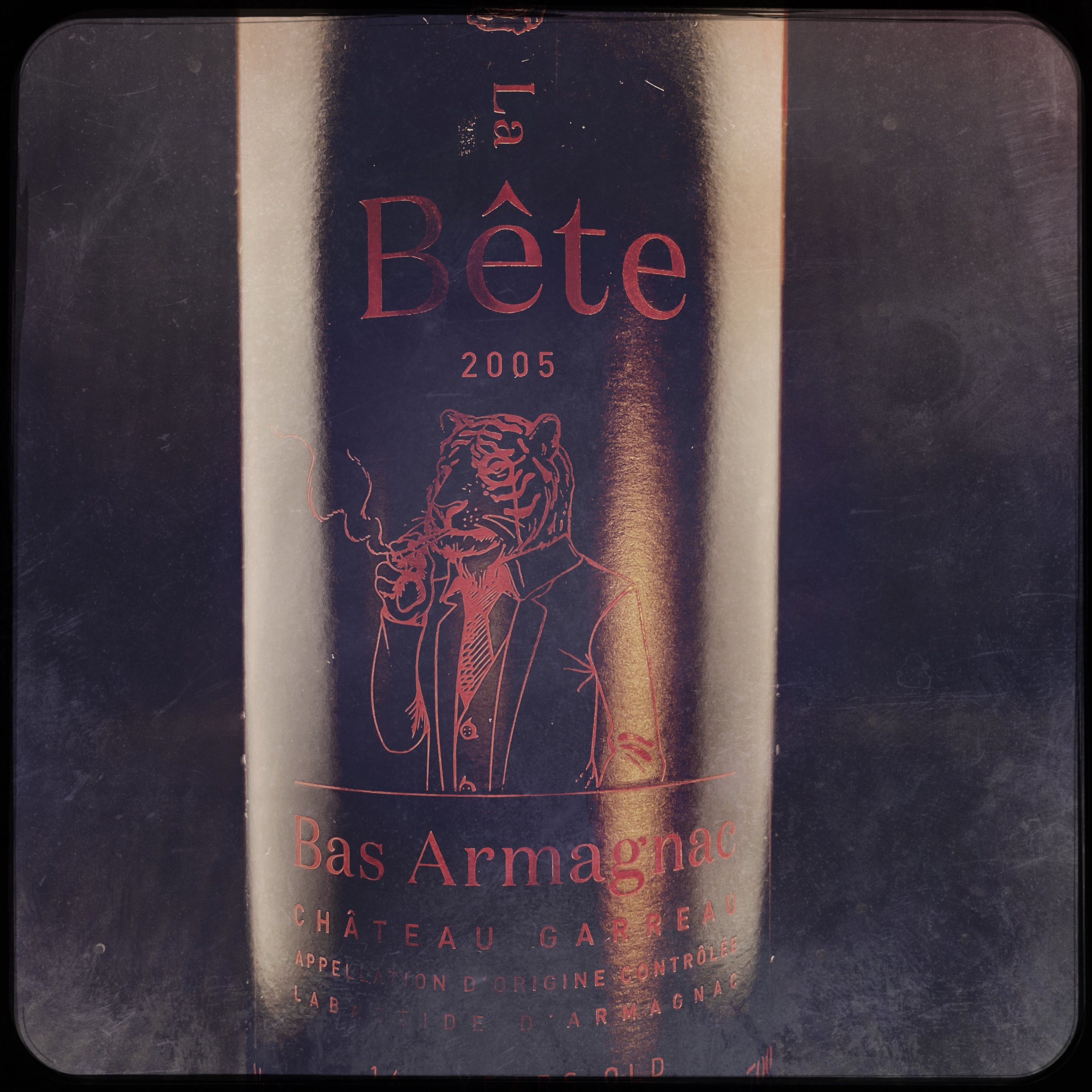
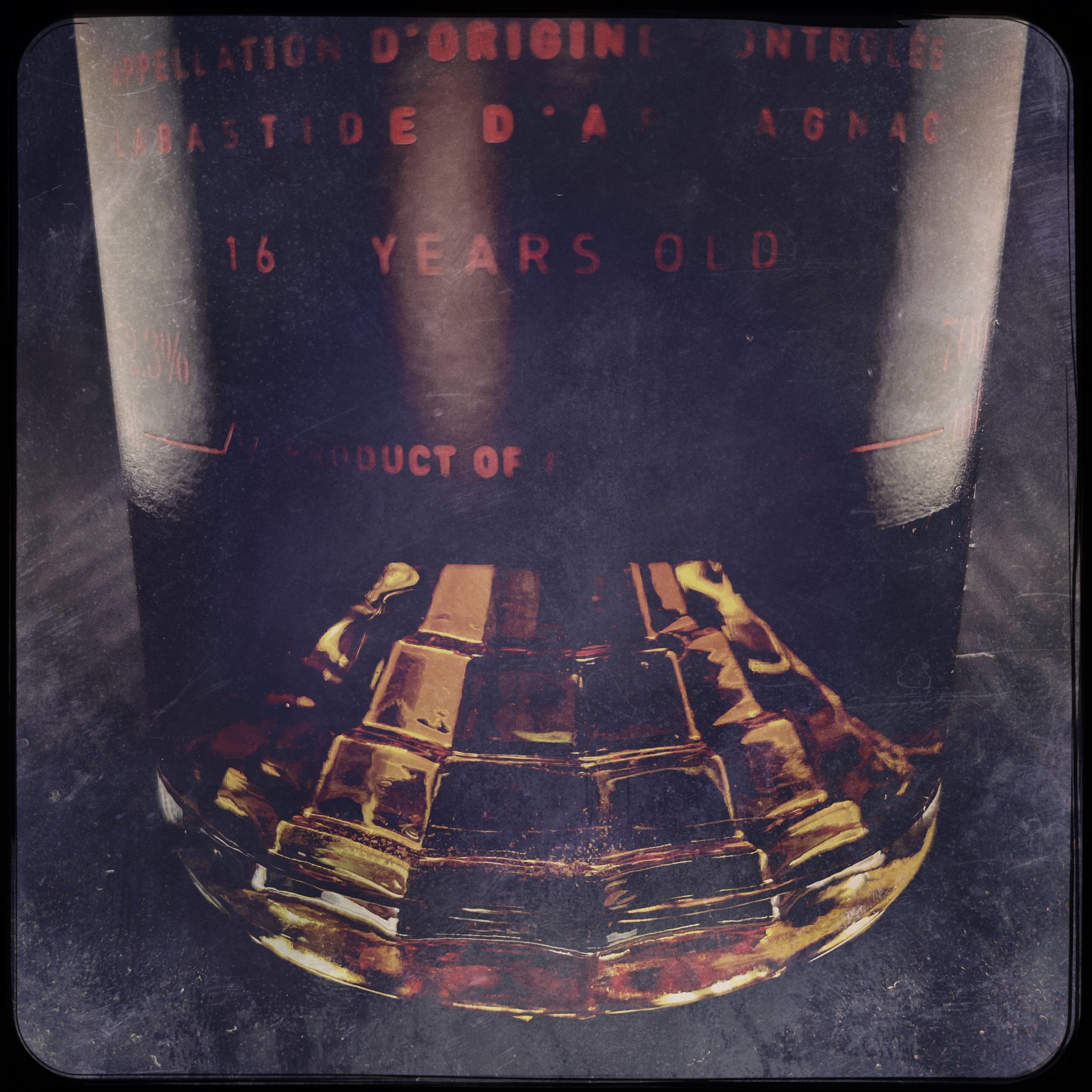


Considering that Beast Masters has employed such characters as a boxing beaver, a martial arts chicken and an anthropomorphic pickle for other private-barrel labels, I’m more than satisfied with this debonaire tiger for the Armagnac. And indeed, La Bête contains enough power and astringency to make your roar.
If a classy animal is what you’re after, you’ll get no greater satisfaction than the aristocratic owl on the label of Gaspard de M., a non-vintage Armagnac fashioned by Castarède and intended for mixed drinks. The owl is adorned in a gentleman’s suit and period ascot, a luxurious black fur and white tie-wig. The brooding bird of prey is a dedication to Joseph-Gaspard de Maniban, Castarède’s 18th century Armagnac producer and French high dignitary. Legend has it Joe’s very own daughter introduced Armagnac to the Royal Court of King Louis XV. Well done your grace! Perhaps you can do the same favor for the drinkers of Louis XIII.
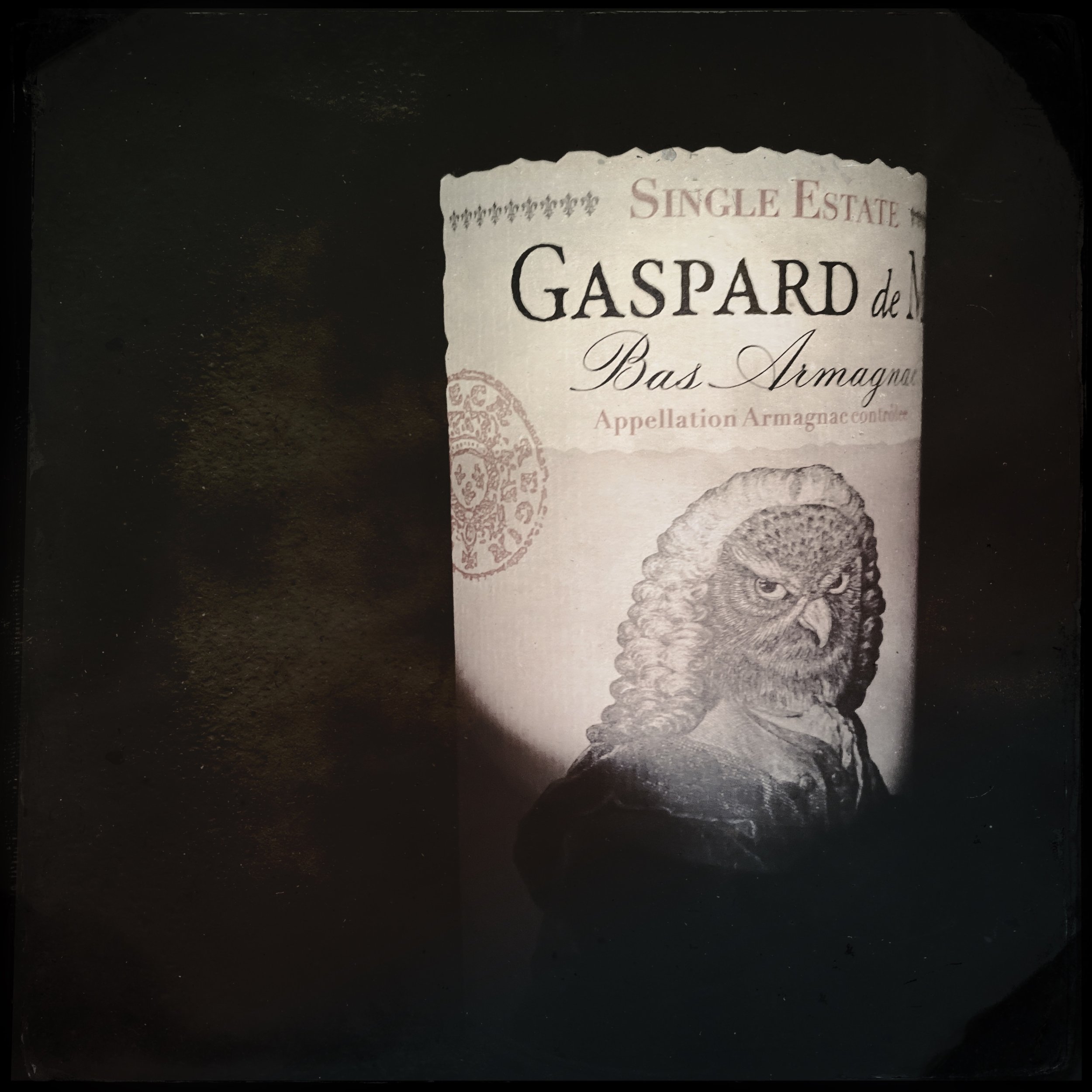
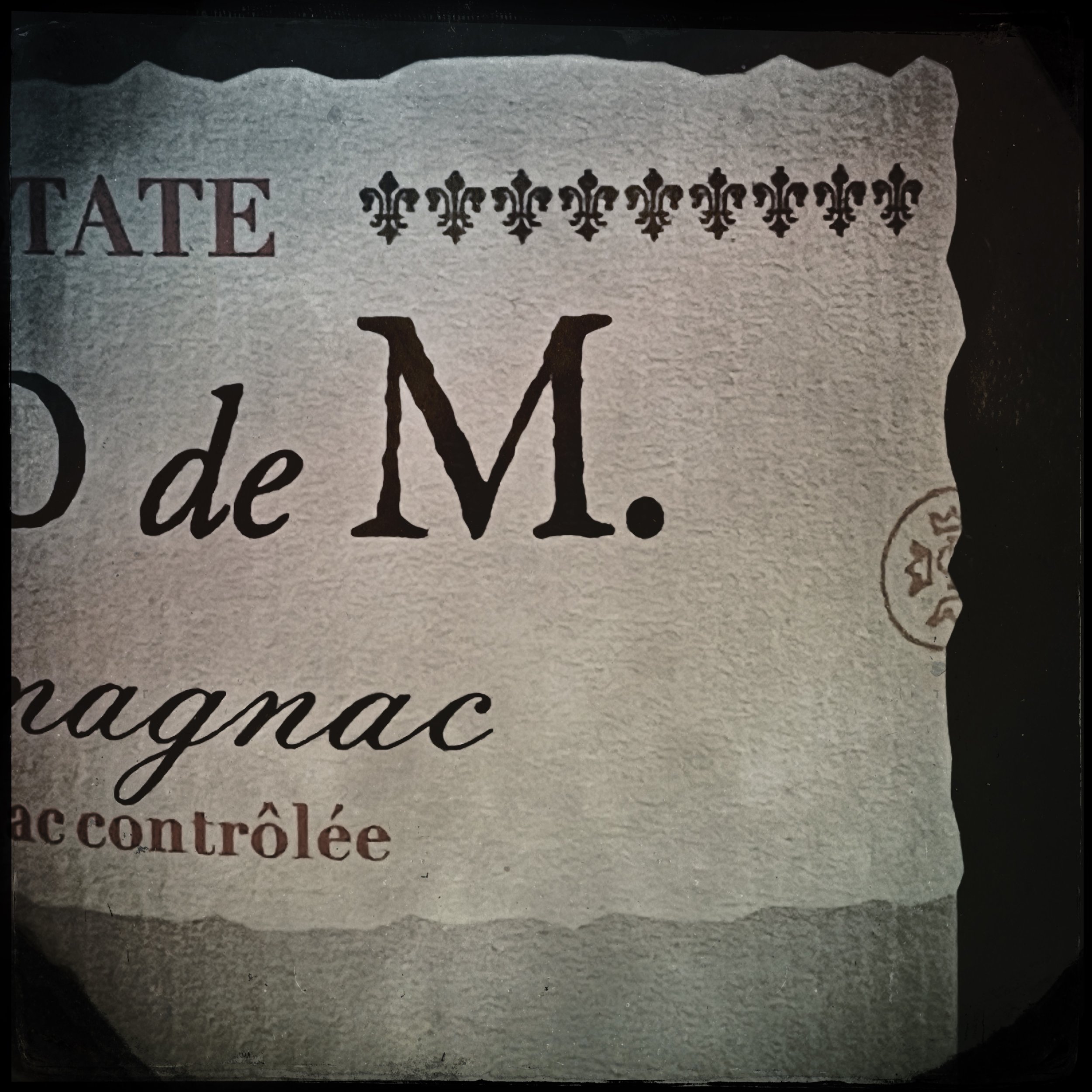
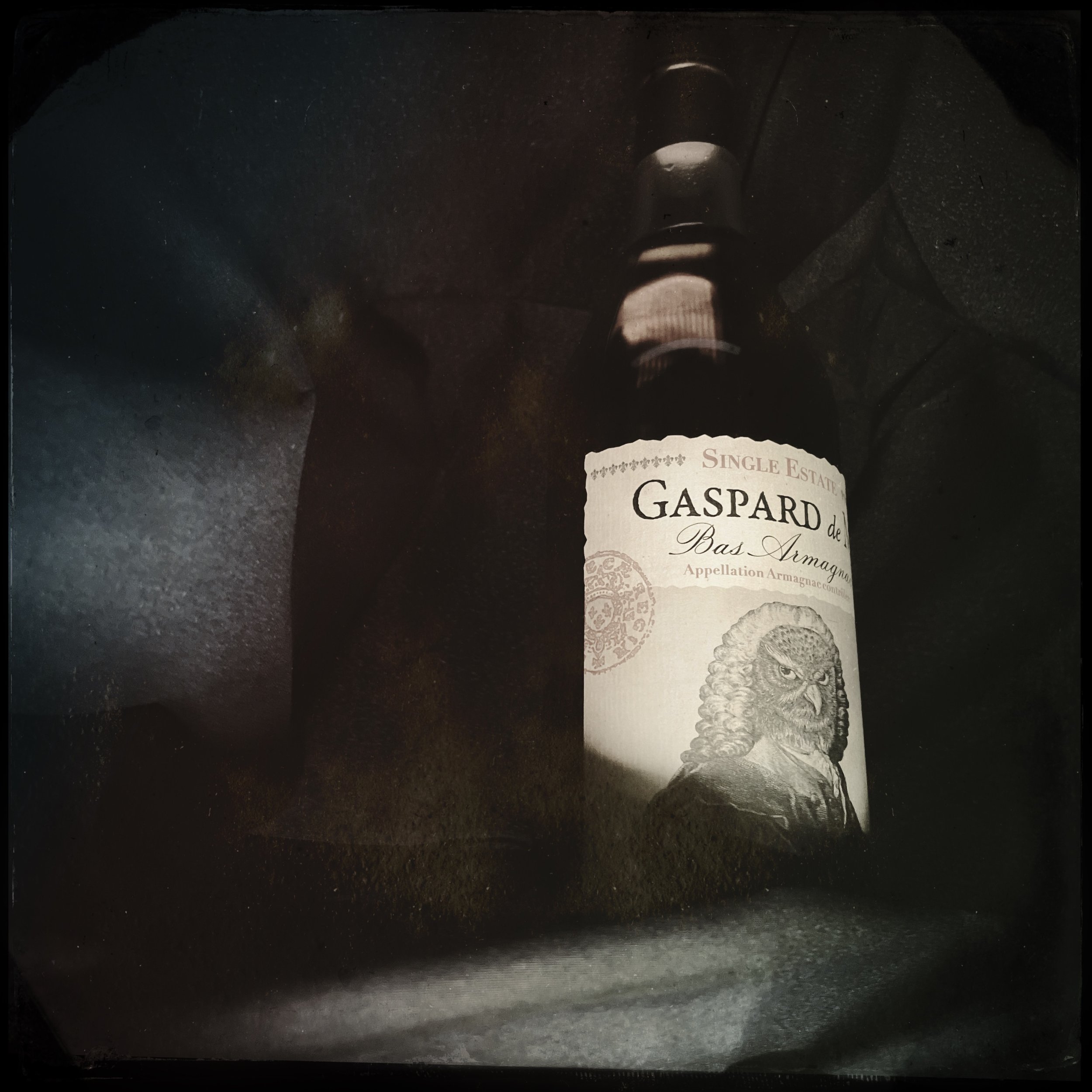
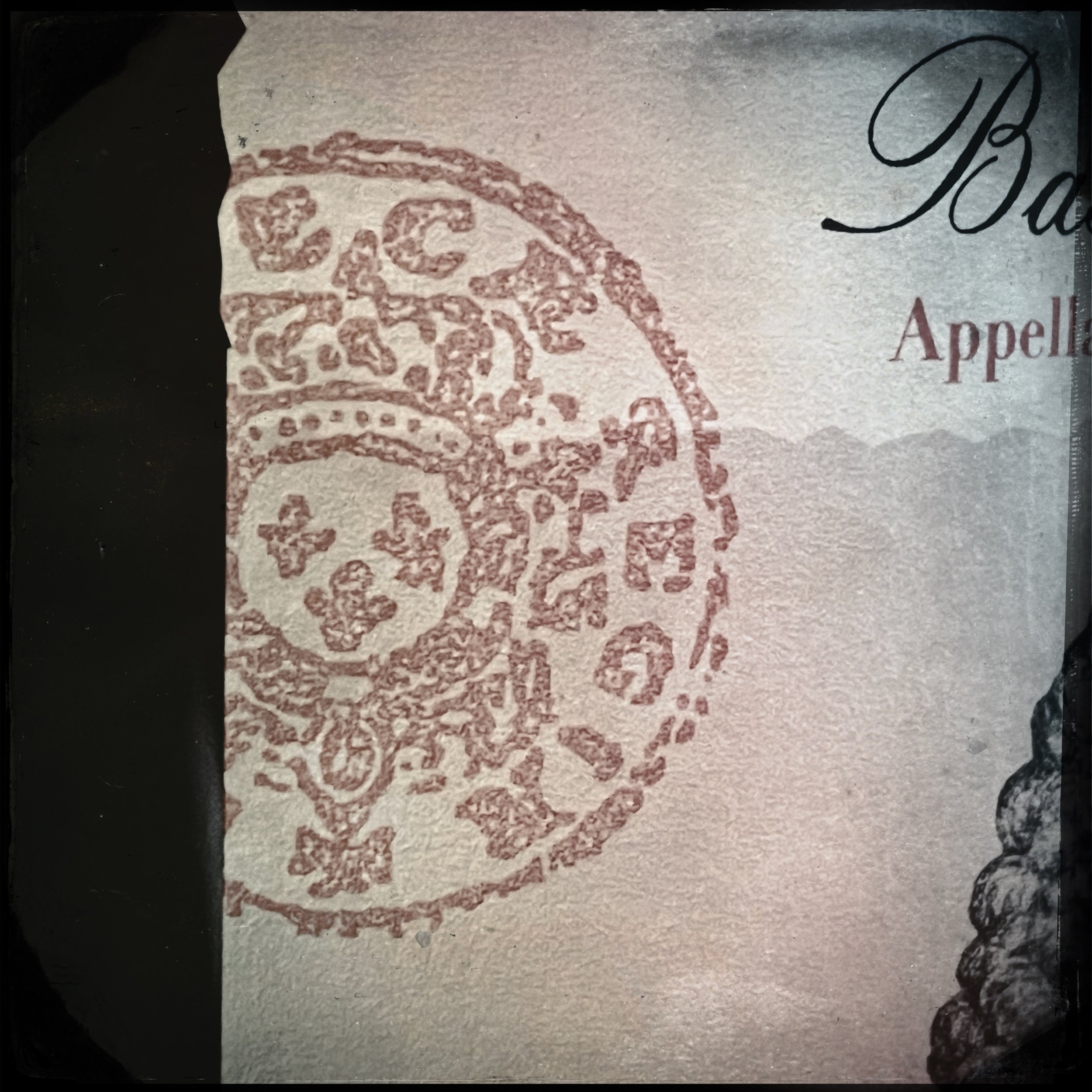

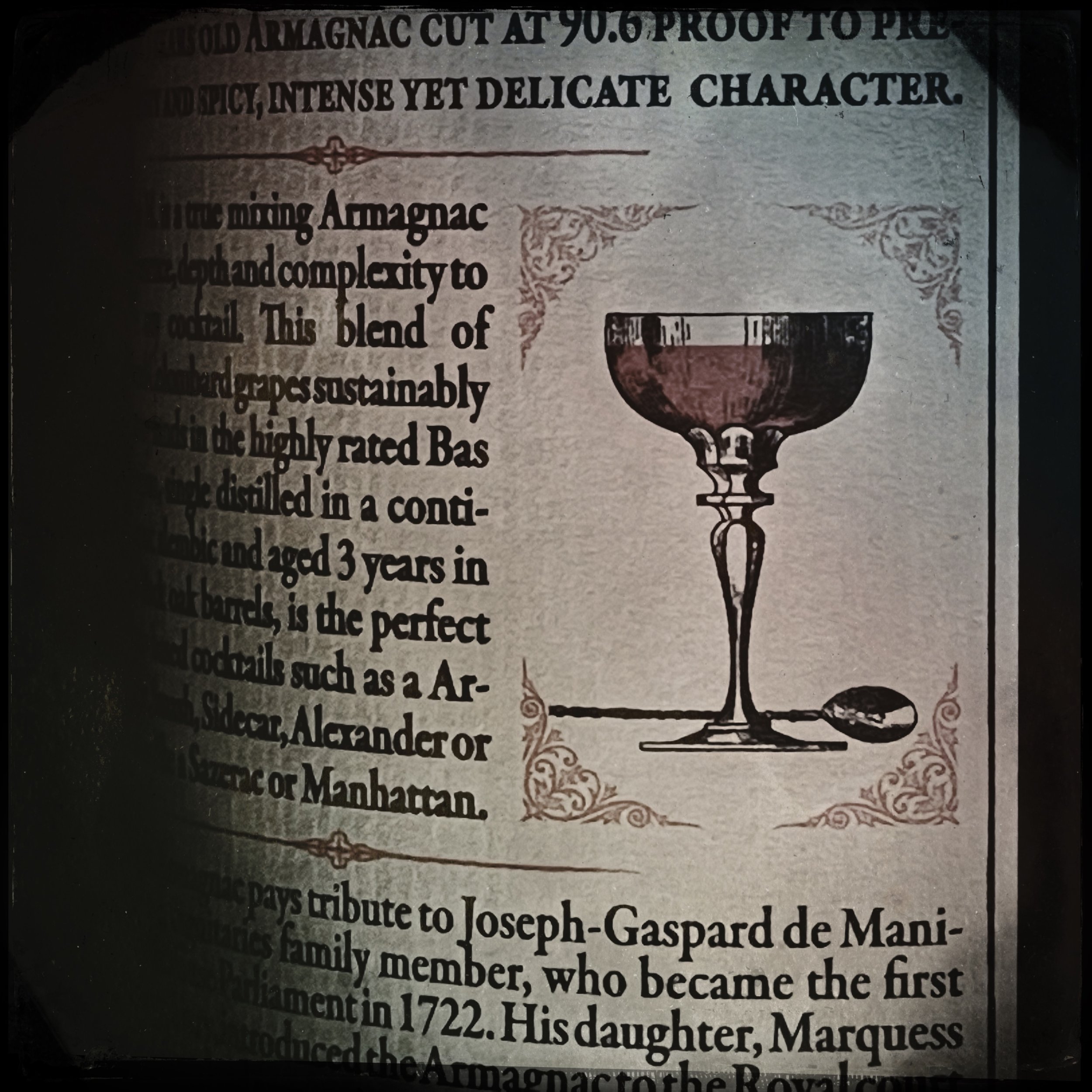
The Owl’s elaborate period haberdashery and pissy countenance not only creates a intriguing and eye-catching label, the artwork also makes an otherwise proletariat expression of French brandy seem a little bourgeois.
Finally, we study another mixing Armagnac, Resistance by Chateau Laballe. The label features a curious etching of a winged insect, and given its prominence on the bottlefront, one can only assume said insect has performed some glorious and noble act. Upon further inspection, however, we learn the insect actually the Phylloxera Vastatrix parasite. Yes, that parasite. The parasite that singlehandedly devastated the majority of vineyards throughout Europe, and for a time, the wine industry along with it. The parasite for which the French must lower themselves to grafting American – American! – roots on their vines. The parasite for which there is still no pesticide, treatment or cure.
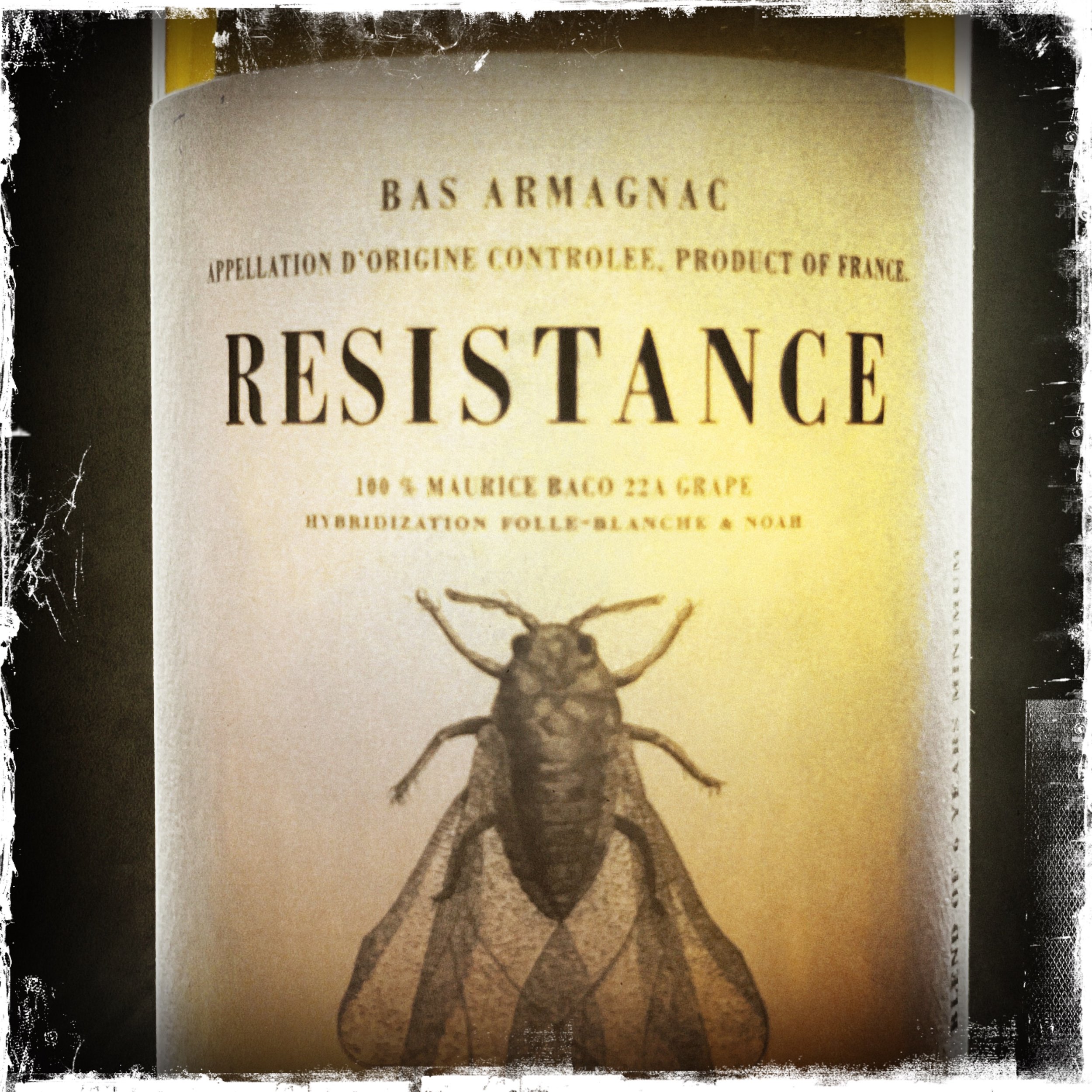
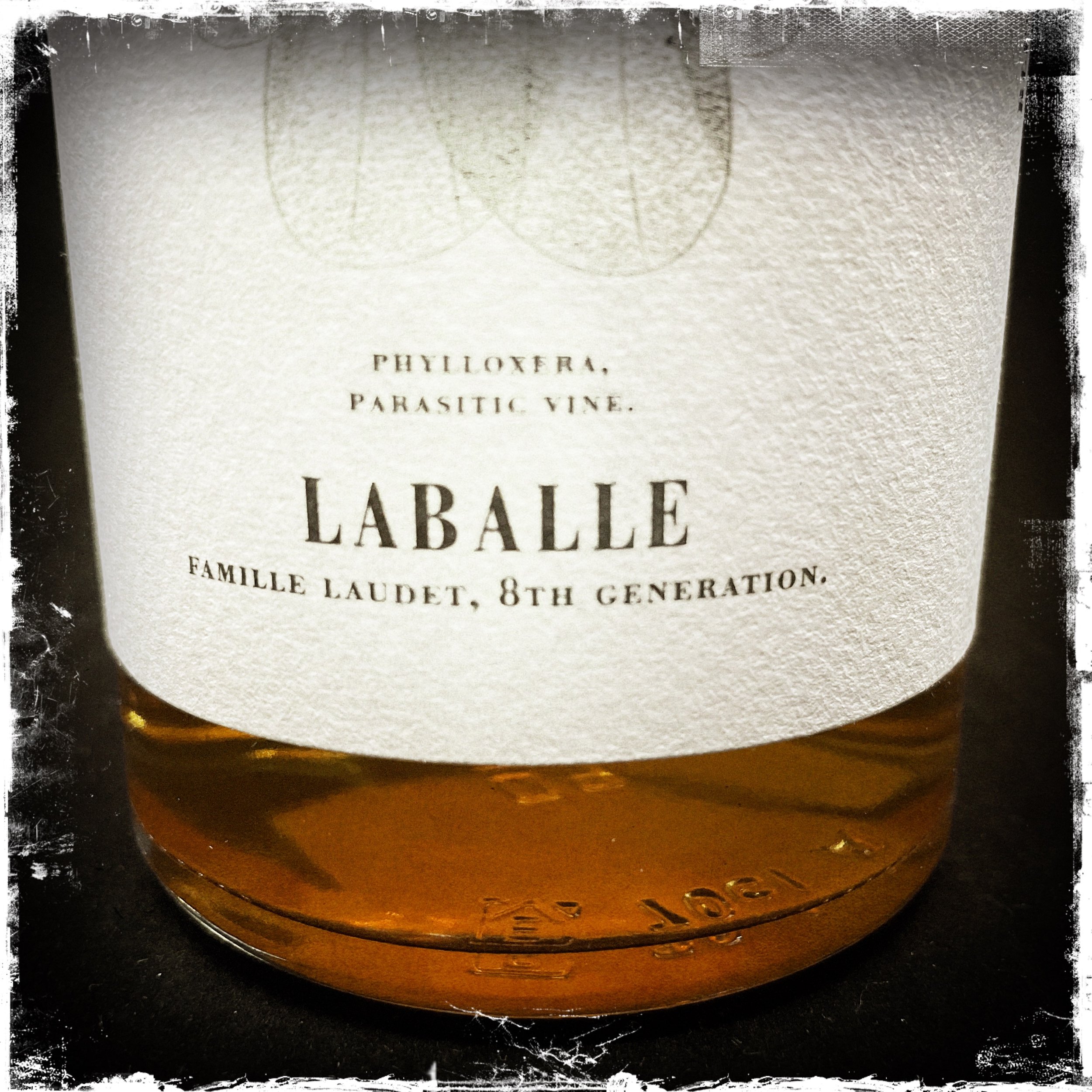

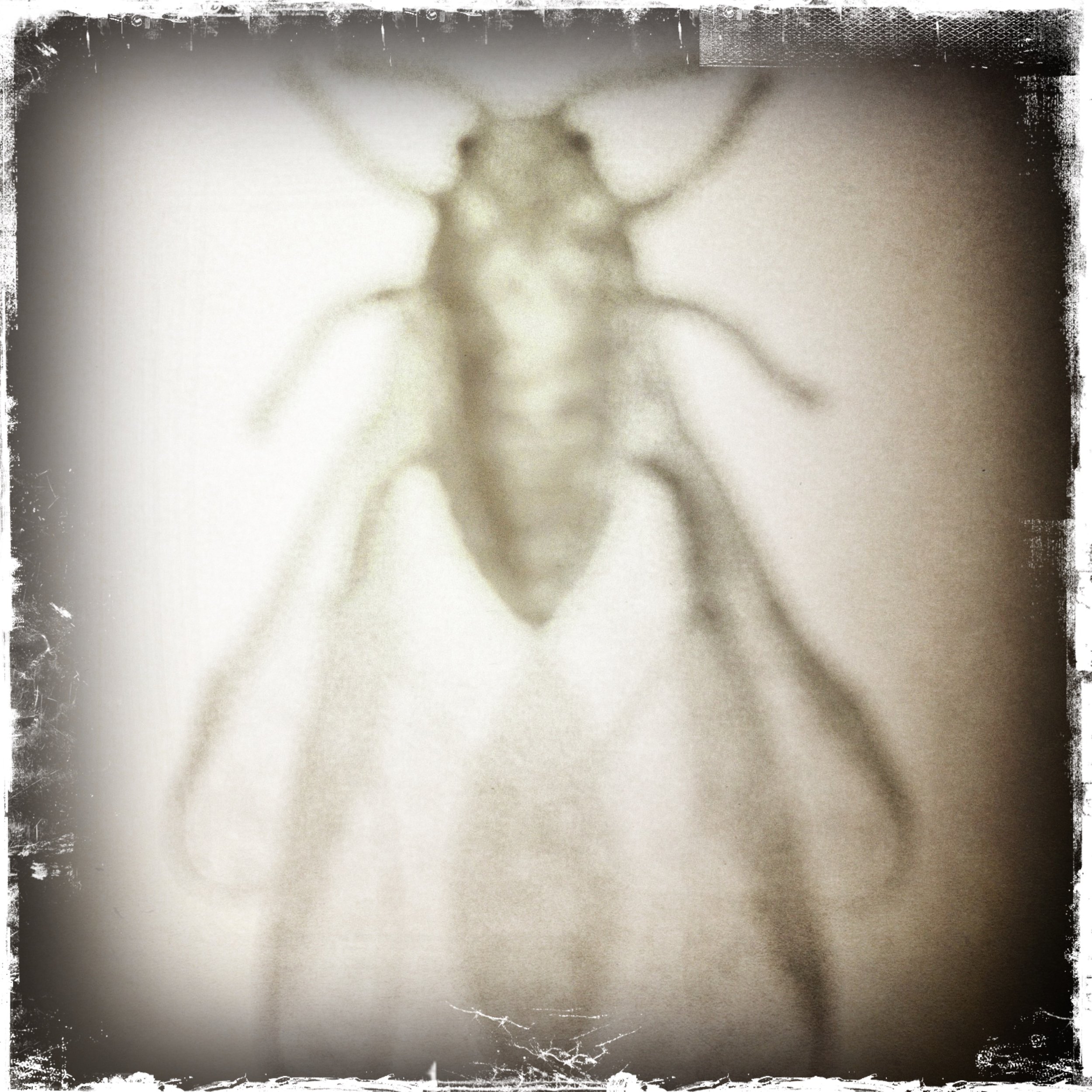
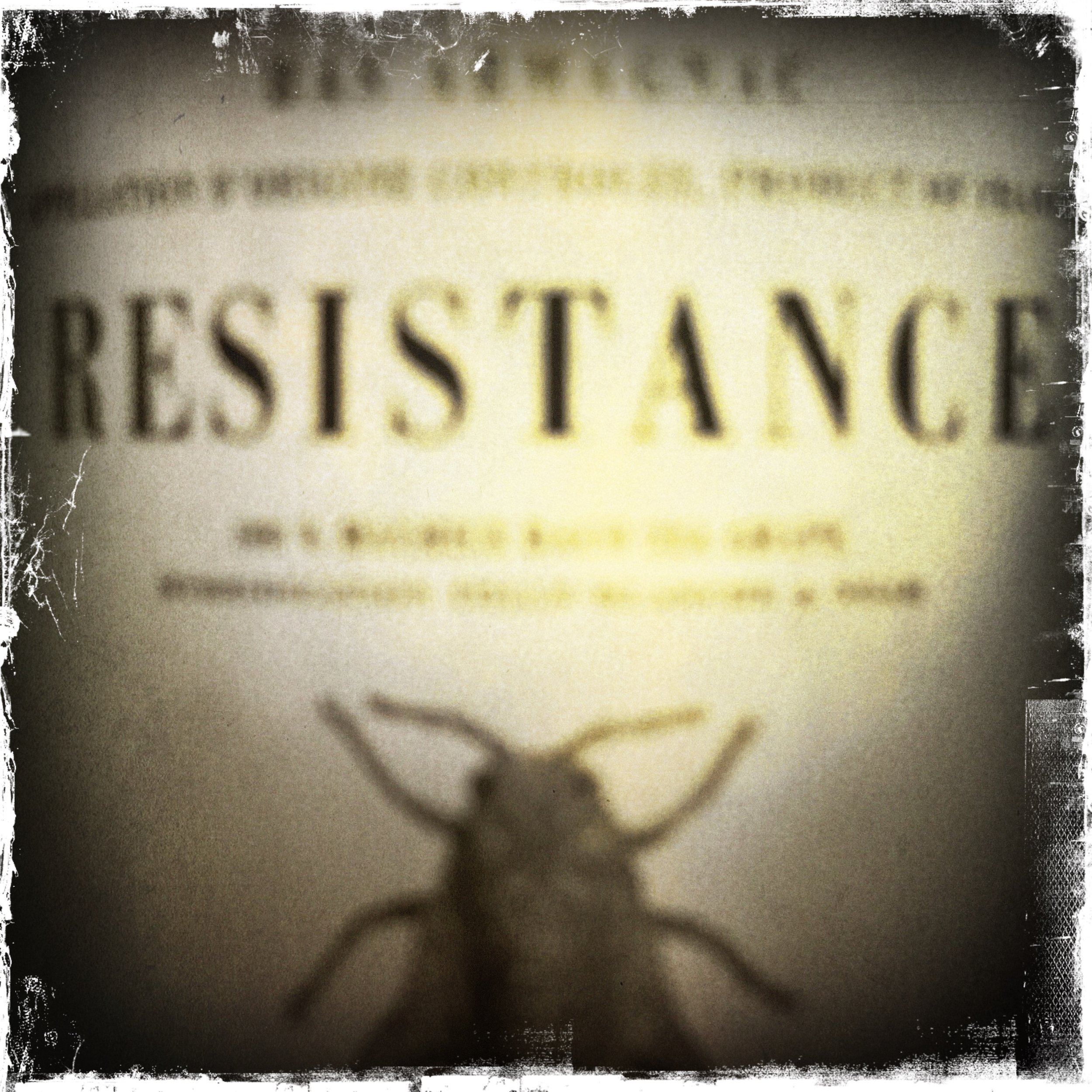
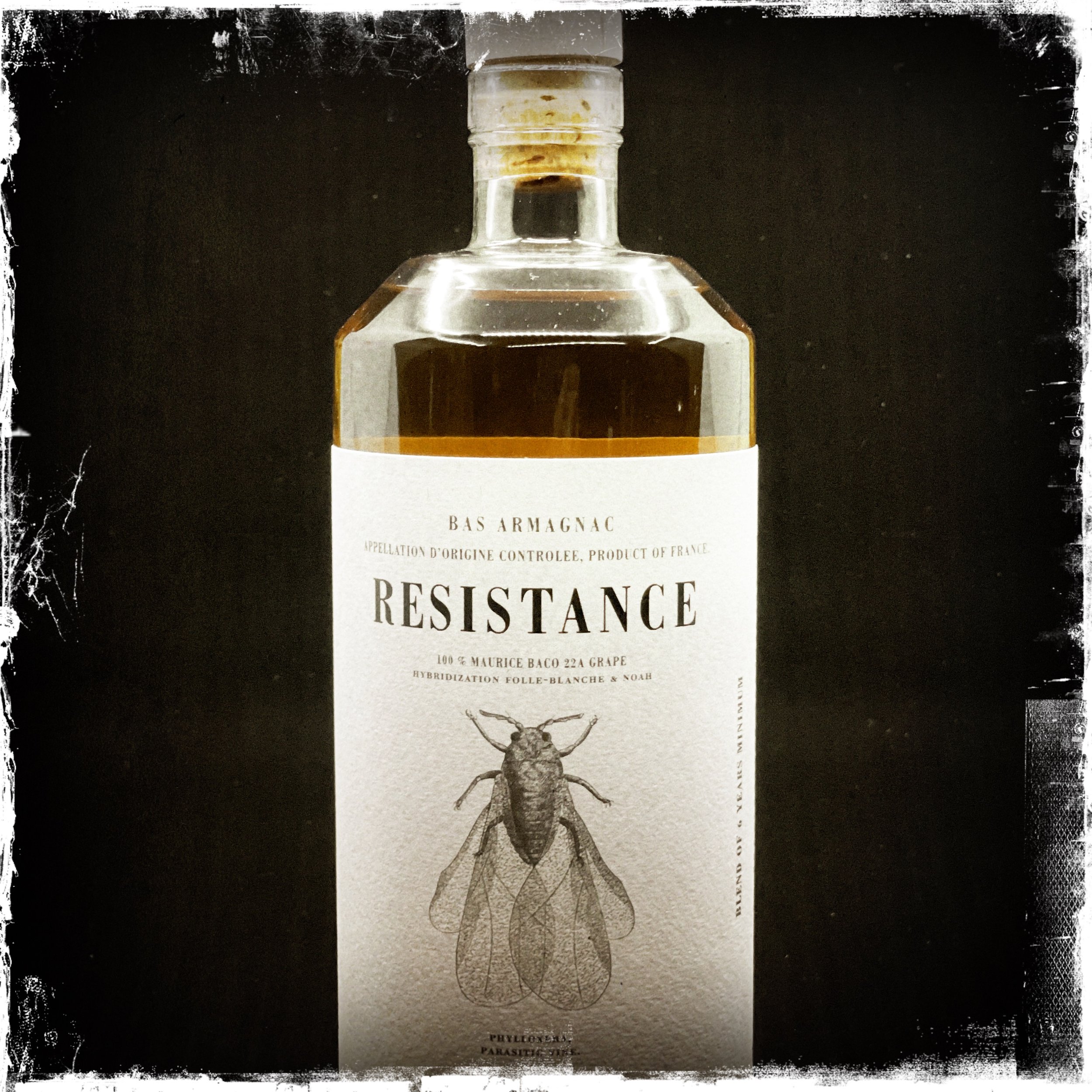
It appears that “Resistance” is not an allusion to the resiliency of Phylloxera, but rather an homage to the hardiness of the Baco 22A grape, a hybrid varietal impervious to the Phylloxera scorge and the varietal contained within the bottle. “Resistance” is also apparently a nod to school-teacher-turned-grape-breeder François Baco who developed the Baco 22A varietal way back in 1898, without, historians believe, the aid CRISPR.
So why, why in the holy name of Romanée-Conti, would you turn a cheek to presenting an artful image of the hardy grape or a stunning likeness of François on your label in favor of memorializing the sap-sucking terror of French viticulture? If I had to venture a guess, the damnable insect simply looks badass.
Nonetheless, I raise my tulip-shaped glass to you dear creatures, the totems of Armagnac, the animal spirits of spirits, for your striking appearance, for embodying – to varying degrees of success – the jewel of a liquid behind your noble wrapper. You’ve set the stage, provided fodder for postulation and pontification, and amplified the Armagnac drinking experience. Yes indeed, presentation matters.
~
REVIEW #4
1987 Domaine de Charron
Aged in Oak Casks for 33 Years
Fût no 53
46.7% Alcohol by Volume
Color: Auburn with gold highlights.
Nose: Chocolate covered cherry, white peach, clove, antiseptic.
Palate: Full and rich palate that includes ripe plum, raisin, ample fresh oak, black tea.
Finish: Black licorice, rancio, Middle Eastern spices, mint. Long and lingering.
Summary: As the grapes were from the same vineyard and harvest, this Charron is kissing cousins with the 1987 Domaine le Chaou, lauded here. The Charron is sweet, supple, strong.
When to drink: A steady companion in man’s search for meaning.
Score: 94
Coming soon to Excellence Rhum (~$179, ships to U.S.). As of 12/4/21 available at Gordon’s Fine Wines & Liquors ($225, ships to MA), Four Seasons Wine & Liquor ($230, pickup in Hadley, MA), Burlington Wine & Spirits ($230, pickup in Burlington, MA)
~
REVIEW #5
1985 Chateau Garreau “La Bête”
Aged in Oak Casks for 36 Years
40.9% Alcohol by Volume
Color: Light auburn.
Nose: Carmel dipped apple, ripe red plum, forest undergrowth.
Palate: Soft mouthfeel with exotic spices, fennel seed.
Finish: toasted oak, rancio.
Summary: More layered and nuanced than the 2005, the 1985 contains an intriguing mix of sweet and earthy flavors.
When to Drink: You’ve got your cigar. You’ve got your suit. You’ve got your double Windsor knot. Now you need your Le Bête.
Score: 87
As of 12/4/21 available at Beast Masters Club ($199, ships to AZ, CA, CO, CT, DC, FL, GA, ID, IN, KS, LA, ME, MN, MO, MS, NC, NE, NJ, NV, NY, OH, OR, PA, SC, VA, VT, WA, WI, WV, WY)
~
REVIEW #6
2005 Chateau Garreau “La Bête”
Aged in Oak Casks for 16 Years
52.3% Alcohol by Volume
Color: Copper with golden flecks.
Nose: Guava jam, cola, antiseptic.
Palate: oil-based paint, portobello mushroom, menthol cough drops.
Finish: Astringent, wet oak, pine needles.
Summary: If in grade school you chomped on your yellow #2 pencils like a tiger on a gazelle femur, this 2005 La Bête will transport you back in time.
When to Drink: When taming a tiger (give it to the tiger).
Score: 83
~
Gaspard de M. Single Estate Distiller’s Cut Bas Armagnac
A non-vintage mixing Armagnac, dull brown color, 45.3% ABV. Aromas of brown sugar and prune. Mild rancio, oak, Irish cream fill the palate, followed by coffee grinds and burnt caramel on the finish.
~
Resistance
A non-vintage Armagnac intended for cocktails, straw colored, 43% ABV. Citrus, green apple, medicinal nose. Sweet, oily and a little bitter on the palate. Dry liquorice root, oak and a touch of peat on the finish.
~
AOML Rating scale:
<75 Not recommended
75-79 Average, contains some flaws
80-84 Good, well-made Armagnac
85-89 Very good, an Armagnac with special qualities
90-94 Outstanding, an Armagnac of exceptional character and style
95-100 Classic, an Armagnac for the ages

